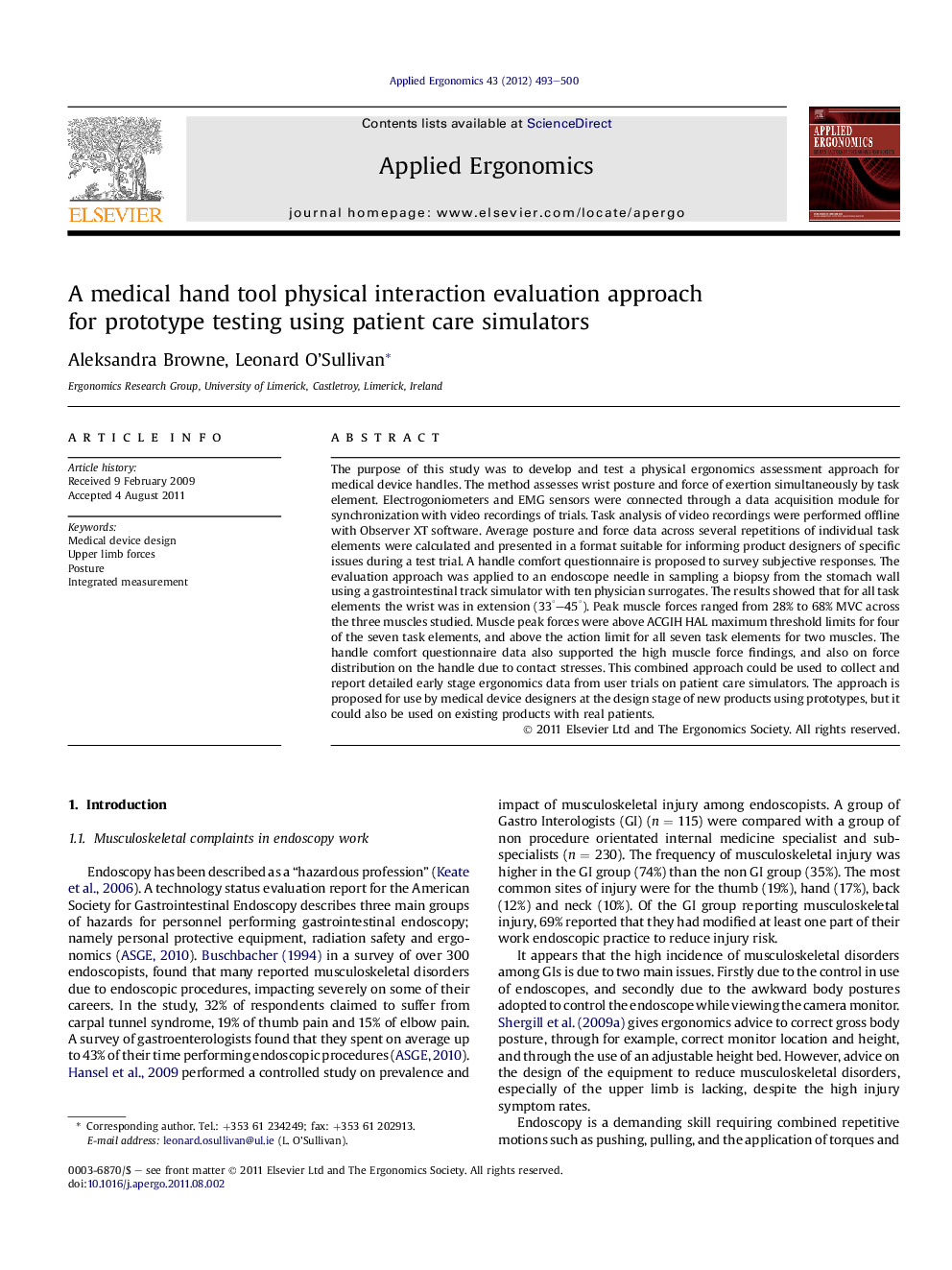| Article ID | Journal | Published Year | Pages | File Type |
|---|---|---|---|---|
| 548736 | Applied Ergonomics | 2012 | 8 Pages |
The purpose of this study was to develop and test a physical ergonomics assessment approach for medical device handles. The method assesses wrist posture and force of exertion simultaneously by task element. Electrogoniometers and EMG sensors were connected through a data acquisition module for synchronization with video recordings of trials. Task analysis of video recordings were performed offline with Observer XT software. Average posture and force data across several repetitions of individual task elements were calculated and presented in a format suitable for informing product designers of specific issues during a test trial. A handle comfort questionnaire is proposed to survey subjective responses. The evaluation approach was applied to an endoscope needle in sampling a biopsy from the stomach wall using a gastrointestinal track simulator with ten physician surrogates. The results showed that for all task elements the wrist was in extension (33°–45°). Peak muscle forces ranged from 28% to 68% MVC across the three muscles studied. Muscle peak forces were above ACGIH HAL maximum threshold limits for four of the seven task elements, and above the action limit for all seven task elements for two muscles. The handle comfort questionnaire data also supported the high muscle force findings, and also on force distribution on the handle due to contact stresses. This combined approach could be used to collect and report detailed early stage ergonomics data from user trials on patient care simulators. The approach is proposed for use by medical device designers at the design stage of new products using prototypes, but it could also be used on existing products with real patients.
► An integrated approach to report muscle activity and wrist postures for steps of a medical procedure. ► The ergonomic study of an echoendoscope medical device using a patient simulator. ► The trailing of a user feedback handle design questionnaire for a medical device design.
